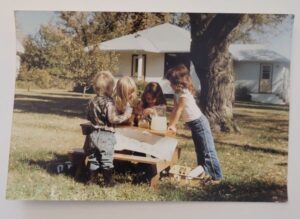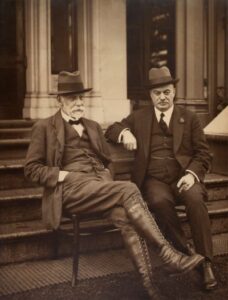

Next month I’m going on a trip to the US, but I won’t know the destination until I’m in the cab on the way to the airport.
A friend and I hatched this “surprise trip” idea a few years ago. One person chooses the destination and books flights and hotel, staying within a certain budget and other agreed parameters. The other person packs for any destination in the United States, and doesn’t find out where until shortly before going through airport security.
Most people probably wouldn’t want to travel like this, but it works for us. We both like surprises, and we both know how to have fun almost anywhere. We did it once already in 2018. I was the planner and my friend was the surprisee, and we had a great time touring Boston. This time I’m the surprisee, and anticipating this trip gives me a feeling I haven’t quite felt before.
It’s interesting because I’m looking forward to the trip, but I have no idea what I’m looking forward to. Thinking about it brings no images to mind, just an exciting void. Mostly I end up thinking about Boston, one of the few places I know we’re not going.
When my mind fails to find an image, a seed from which to envision this upcoming trip, it feels something like I’m standing on a cliff, looking out into impenetrable darkness. Nothing can be seen that way, and right now there is nothing that way, but it’s still the way I’m headed. The landscape will form just as I move forward into the nothing.
This strange mental experience, of looking forward into a mysterious void, is probably a more realistic view of the future than the one we normally entertain. “Looking forward” isn’t actually possible, because “forward” isn’t there yet. If you think about next week or next month, your mind will populate with images and impressions about what might happen: people you might see, things you might do, pleasures and displeasures you might run into. But all of those ideas about the future are actually made of memories — mental facsimiles of past experience. You’re not looking forward, you’re assembling remembered images into a haphazard diorama, which is supposed to be the future you’re headed to. But you’re not headed there; you’re headed into the void.
Not that there’s anything wrong with that. The void is always coalescing into the present, which is where the entirety of life happens. The void can deliver experiences you never thought to think about — in fact it’s not possible to think about them, because thinking about them would require you to already have memories of them.
It’s worth pondering our true situation with respect to time: the past and future are inaccessible and hypothetical. They don’t exist in our experience, and they don’t exist by definition. They are figments created momentarily, in the present, by thinking. We’re confined entirely to the knowable present, even though we may spend much of that present compulsively hallucinating times and places outside the present. But they’re not really there.
It seems like the past is unlike the future in that it has already happened, but the past is every bit as hypothetical. There’s evidence of past events, but evidence only helps you to imagine the past and say things about what you imagine — it doesn’t let you experience the past. We’re frequently fooled on this point by our imaginations. A photograph provides a still image of a past instant, but the context and meaning of it are always imagined; a sepia picture of a man in a cowboy hat and chaps is only that, but your mind will invent a story about it, and the past at large, from captions, anecdotes, memories of movies, history lectures, and childhood cartoons, none of which give you access to the past as it really happened.
Even looking at a photograph of a moment you were present for doesn’t allow you to experience any part of that moment. At best you can experience a present-moment rush of thoughts and emotions that seem to somehow be from the past. But those feelings are generated here and now and experienced as they occur.
The future is just as inaccessible, but even less imaginable. We have no view whatsoever of the future. Anticipating this surprise trip is one of the few experiences I’ve had that makes this reality obvious. When I look forward to the trip, I can feel the how unformed the future actually is, because there are no memories or preconceptions I can map onto it. I can’t fool myself with an imagined diorama because I have no materials with which to build one.
My friend knows where we’re going, so she can “look forward” to the trip in the conventional sense, by exploring remembered images and thoughts of Atlanta or Santa Fe or Memphis or wherever we’re going. She might imagine we’re headed to that collection of images, but we’re not. We’re headed towards experiences we don’t yet have memories of.
What all this means is that the future is far more mysterious than we usually believe, because we inadvertently expect it to be made of things we’ve already seen. By the time the “future” becomes our present-moment experience, we’ve forgotten those ad-hoc memory-derived expectations because they’re no longer relevant, and they were just passing thoughts anyway.
The future being a mysterious and hopelessly unpredictable void might sound scary, because we’re a security-preoccupied creature that likes to inventory potential threats. But mostly I think it’s good news. Life will take on forms we didn’t realize it could take.
As just one example, think about people you love who you didn’t always know. Before you met them, no matter how much you thought about the future, you could not have imagined Joan’s infectious laugh, Victor’s reassuring voice, or the way it feels when Robbie enters the room. The materials were never there to fabricate them. Everybody and everything that makes life great emerged right out of the void, in spite of all expectations, whole and unimaginable.
***
Photos by Vidar Nordli-Mathisen, Isabel Cain (?), and Museums Victoria
Discover more from reviewer4you.com
Subscribe to get the latest posts to your email.








